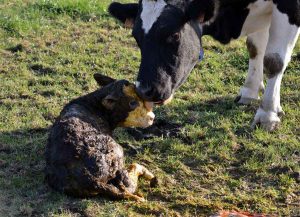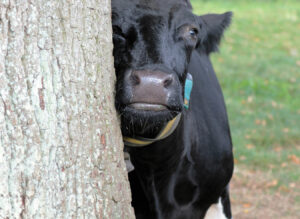Fernando Diaz
Traditionally, the methods used to detect estrus in dairy cows include visual observation, tail painting, tail chalking, rump-based pressure and scratch-off patches. In high-producing cows, the duration and intensity of estrus behavior is considerably lower than that in dairy cows of a few decades ago. In fact, standing estrus only occurs in 30 to 80% of lactating dairy cows. For this reason, precision dairy monitoring devices (tag, leg, collar) that measure cow activity, rumination, and feeding and lying behaviors are commonly used for estrus detection.
Researchers from the University of Kentucky, Lexington, evaluated the efficacy of automated estrous detection systems in 109 Holsteins cows. Cows were enrolled in the experiment between 45 to 85 days in milk, and each cow was equipped with the following devices:
- AfiAct Pedometer Plus (AfiMilk, Kibbutz Afikim, Israel)
- CowScout S Leg (Nedap Livestock Management, the Netherlands)
- HR Tag (SCR Engineers Ltd., Netanya, Israel)
- CowManager Ear SensOor (Agis Automatisering, Harmelen, the Netherlands)
- IceQube Leg (IceRobotics Ltd., Edinburgh, Scotland)
- Track a Cow Leg (ENGS Systems Innovative Dairy Solutions, Rosh Pina, Israel)
The researchers (Mayo et al., 2019) used a modified G7G-Ovsynch protocol with last GnRH injection withheld to permit expression of estrus. They observed cows for estrus during 30 minutes 4 times daily, and considered progesterone concentrations in blood as the reference standard used to compare the efficacy of the automated detection system.
- 2% of cows had a temporal progesterone pattern indicative of ovulation (>1.0 ng/mL on day −5, −4, and −3, and then <1.0 ng/mL on day −1 and >1.0 ng/mL on day 6 and 8).
- The accuracy, estimated as the proportion of cows that were correctly identified in estrus or not in estrus, to detect estrus by visual observation was 70.6%. Interestingly, only 47.0% of the cows stood to be mounted during visual observation.
- Four of the 6 commercial estrus-detection devices had greater accuracy than visual observation. Estrus-detection accuracy for CowManager, AfiAct Pedometer, CowScout S Leg, and Track a Cow were 90.8, 81.7, 80.4, and 73.8%, respectively.
- On the other hand, two devices showed less accuracy than visual observation [(IceQube (60.4%) and HR Tag (48.4%)].
- Only 56% of cows that ovulated were observed standing by visual observation.
In conclusion, according to this study some of the automated estrous detection systems commercially available in the market are not accurate. Therefore, dairy producers should evaluate different options carefully before implementing this technology,
Reference
M. Mayo, W. J. Silvia, D. L. Ray,1 B. W. Jones, A. E. Stone, I. C. Tsai, J. D. Clark, J. M. Bewley, and G. Heersche Jr. 2019. Automated estrous detection using multiple commercial precision dairy monitoring technologies in synchronized dairy cows. J. Dairy Sci. 102:2645–2656.
© 2019 Dairy Knowledge Center, LLC. All Rights Reserved.











